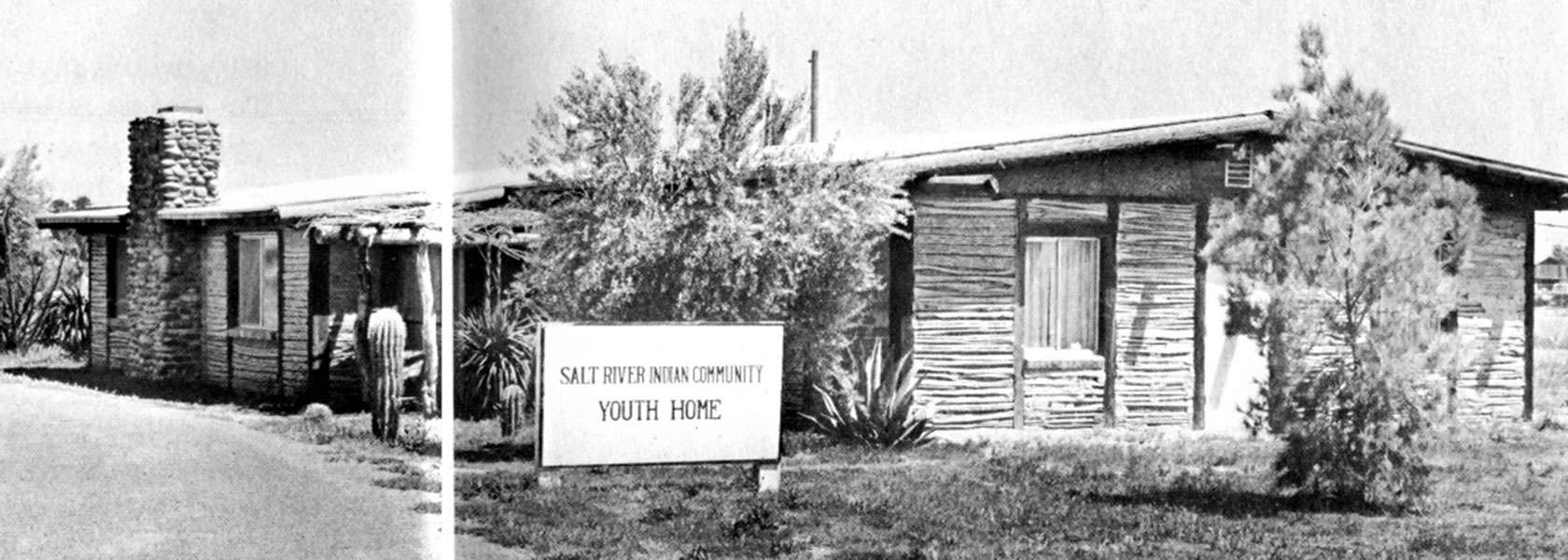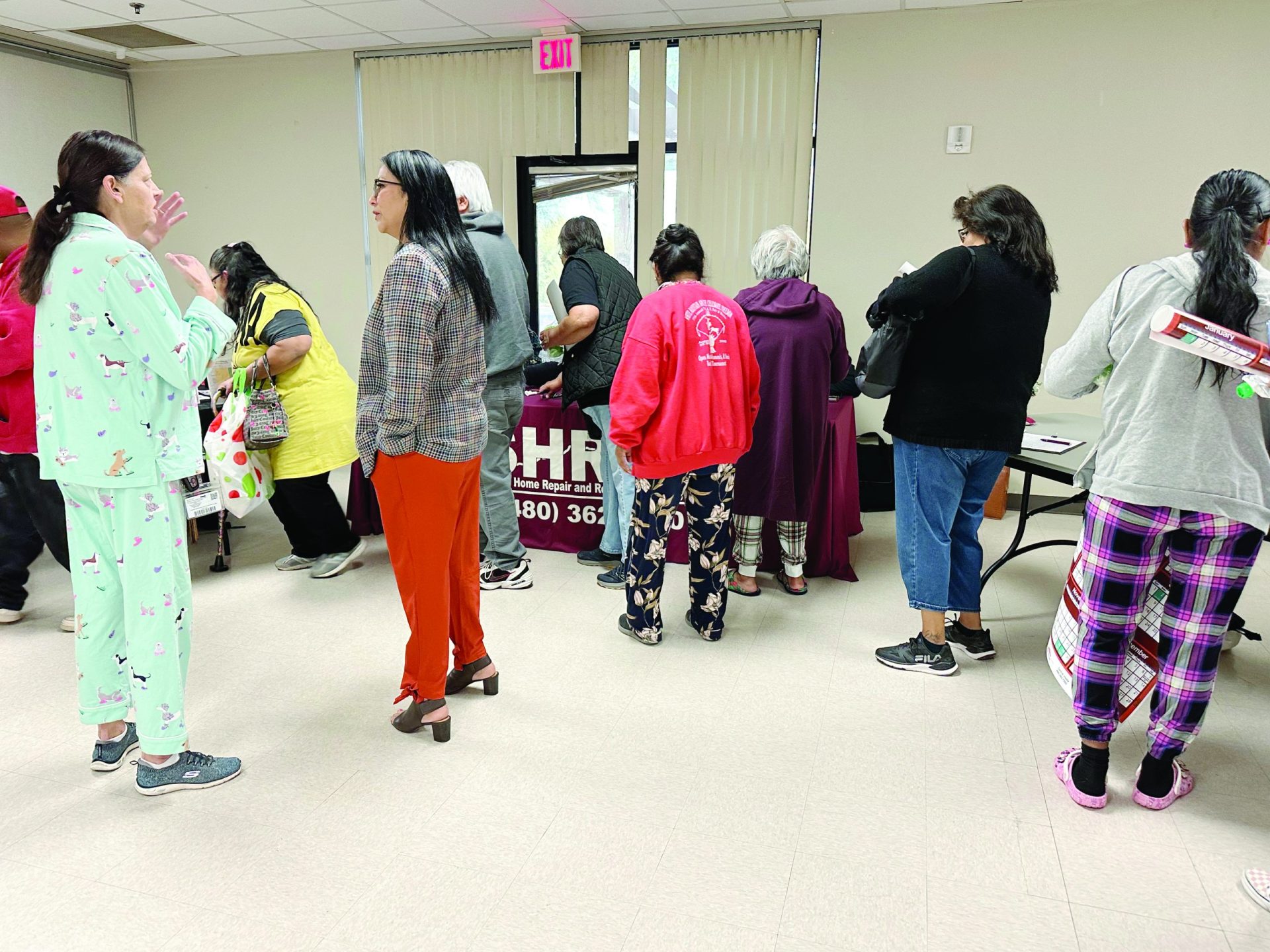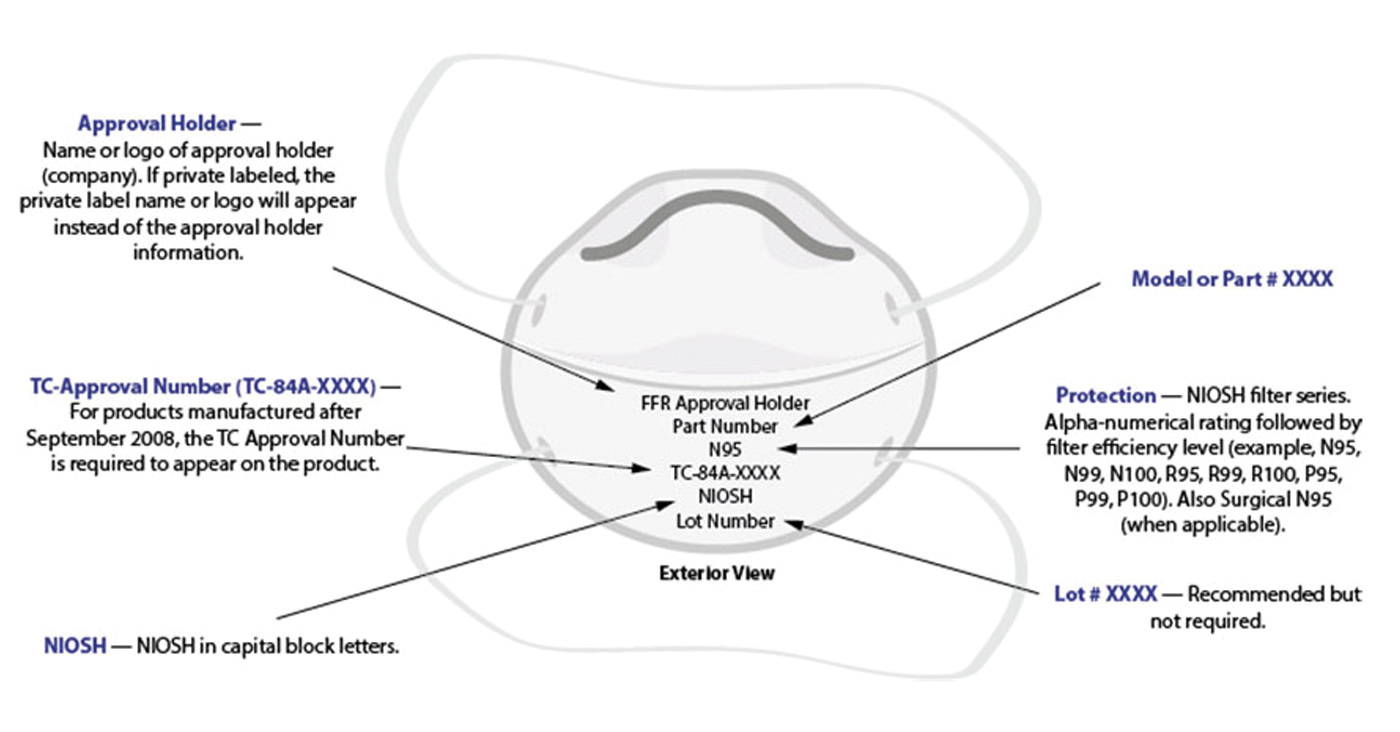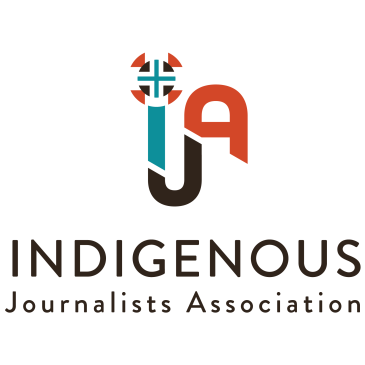VIEWS: 961
January 19, 2023Huhugam Ki: Museum Renovation Helps Resurface History
As the Huhugam Ki: Museum enters its 35th year of operation, the time has come to keep the current facility in good shape and useful for another 35 years. After its anniversary celebration on November 5, the museum shut its doors for some needed renovations. Years of fixing, wiring, and adding and replacing building materials had left what was behind the walls and ceilings in dire need of repair. The museum will be shuttered until work is completed.
“Under the direction of (Salt River Pima-Maricopa Indian Community) Public Works, decades of insulation, wiring and electrical boxes were removed, along with the ceilings in both the 1980s kitchen addition and museum offices,” said Museum Director Gary Owens. “The gallery and museum store were left untouched, as they had been through renovation in 2008 and were brought up to current code. So now it was time to work on areas that once housed Community members in the building known as the Salt River Youth Home.”
The building was originally constructed starting in 1965 and was completed a year later.
We Learn About History by Looking at the Past
After the ceilings, insulation and wiring were removed, Public Works Senior Project Manager Thomas Gardner was able to see what lay in store for the renovations, explained Owens.
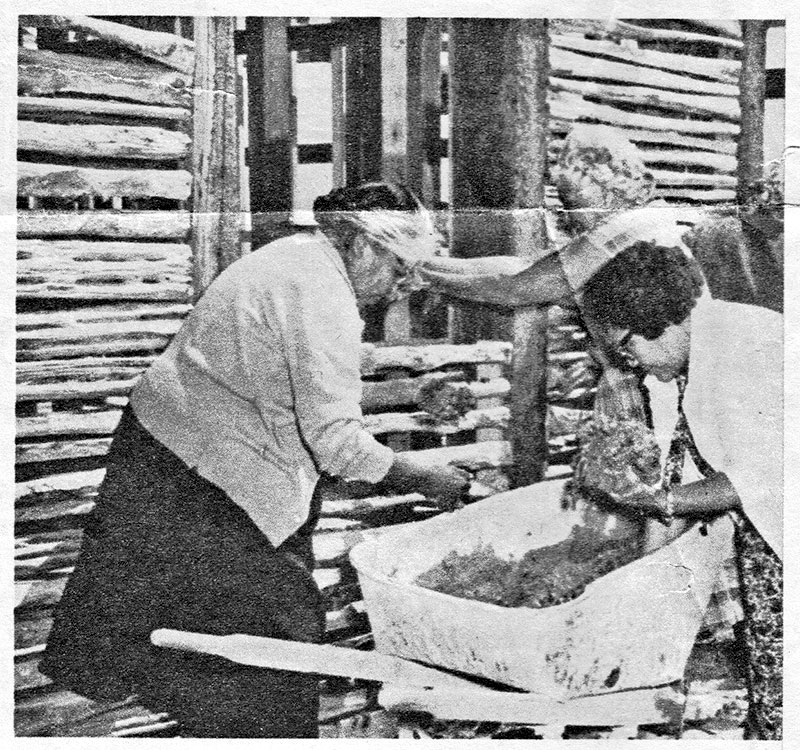
Workers had gone down to the original lath and plastered walls in the office area, which had served as the bedrooms for the male youth. Above were the original tongue-and-groove ceiling planks, which surprisingly were in excellent shape. The plaster and lath walls were constructed directly on and in front of the adobe brick and packed walls. Railroad ties were used for the corners and window frames, and the bigger surprise was to find the covered window supports that were in every room for the youth. When the museum was renovated in the late 1980s, all that was needed was to “furr out” or build false panels over the existing original plaster and chicken-wired supported walls.
“What this did was to encapsulate the original organic building materials and protect them from wear and deterioration. This is one of the [same] processes that we do with museum archives: find the documents and encapsulate them to give protection to the important historical information,” said Owens.
Gardner added that the roof was placed on top of the adobe walls with small openings that allowed air to circulate and keep the roof and wood beams dry and free of mold. That’s why they’re in great shape.
“The people who built this knew what they were doing,” said Gardner.
We Become Part of History by Sharing Our Past
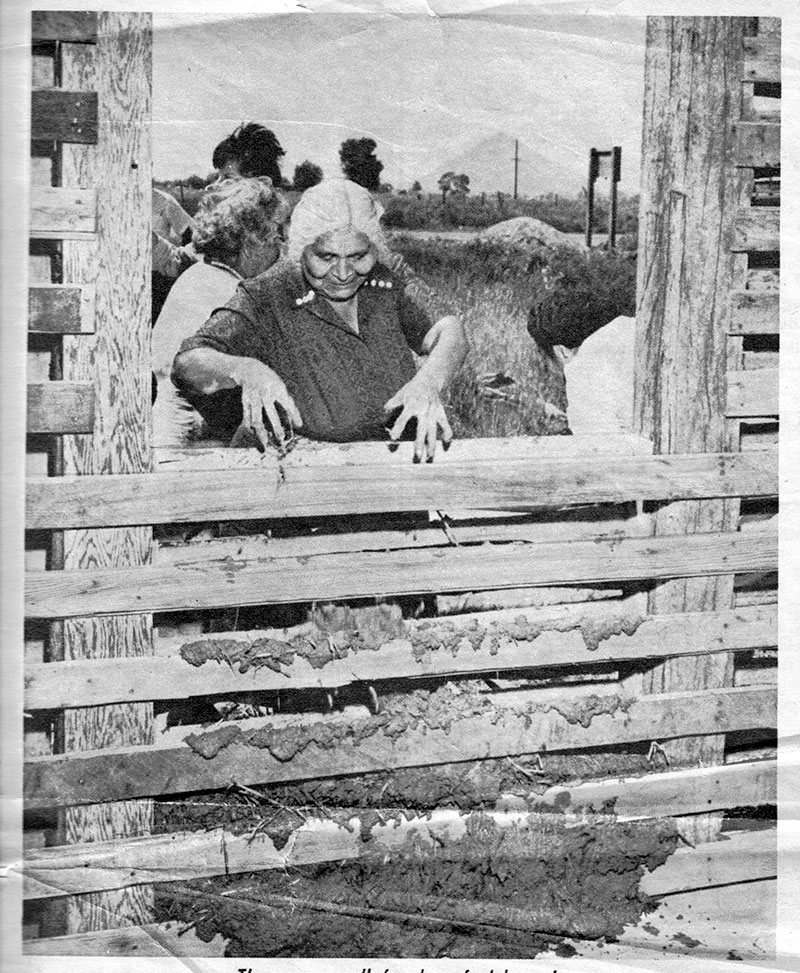
Meldon Fulwilder, Mike Andrews and Norman Osif, tribal members who have experience in construction and building adobe structures, have examined the open museum walls and taken a look at the foundation of adobe brick and the construction techniques employed by the men and women who helped build the home, explained Owens.
“It was good to see that the railroad ties and brick had very little damage, if any, and these men were able to connect the process of building the home with the ones they had experienced,” said Owens.
This is the way they were taught, using ties to build the frame and make the brick or set up cross boards to pack the mud in. Some used trusses, but some of the older houses had just a flat roof with arrow weed or other brush thrown on top, then packed with adobe.
“The men have worked with the museum before and were helpful in planning the stabilizing of the original one-room schoolhouse located near the new Cultural Repository off of the old Day School campus,” said Owens. “For that project, a new roof was constructed and set in place, adobe walls were stabilized, and the whole building was painted to match the original color.”

Peeling Back the Layers
Since the beginning of November, the museum has been undergoing a revitalization of its history here in the Salt River Community. Stories are emerging about youth who have stayed in the home, as well as the house parents and staff who worked to provide the children with the structure and responsibilities that are part of being in a home environment.
Plans are being made for a reopening in late winter/early spring; the museum definitely will reopen in time for the upcoming Tortilla Festival, planned for the latter part of March. For now, the gift shop is closed and staff are offsite, but they can be reached through the museum’s main line at (480) 362-6320. Work will continue and more stories will be gathered to add to the history of the Salt River Community. Follow the Huhugam Ki: Museum and the SRPMIC Cultural Resources Department on their social media pages at www.instagram.com/saltrivercrd and www.facebook.com/saltrivercrd for more updates and information.
Note: Huhugam Ki: Museum Director, Gary Owns contributed to this article.

